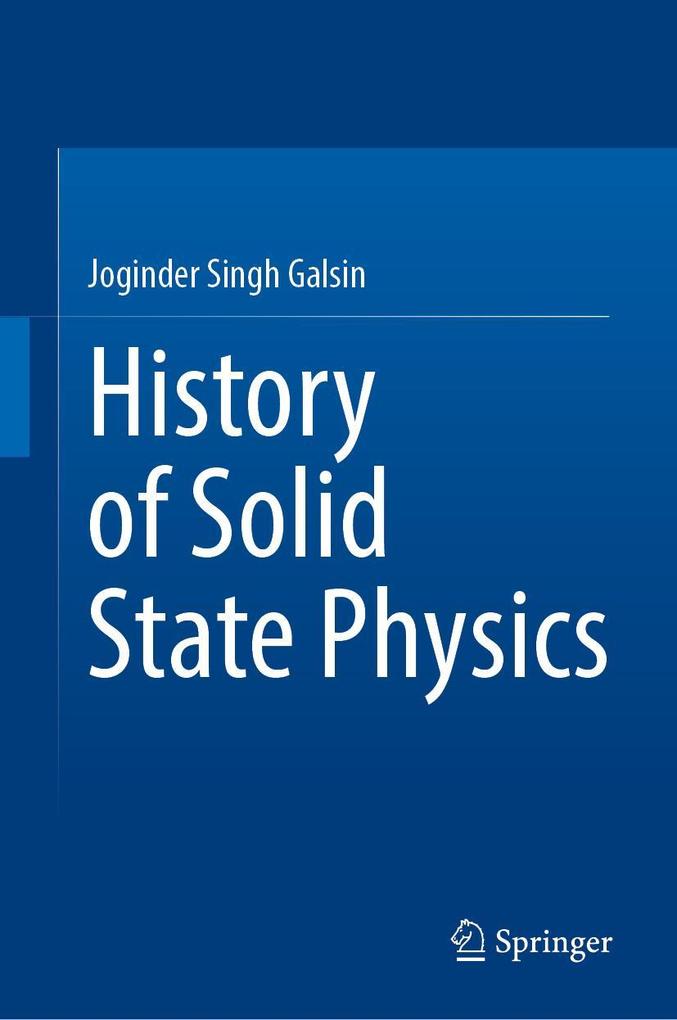
This book describes systematically the historical aspects of the development of Solid State Physics. The book has been divided into two parts. In the first part, the early developments in science have been described starting from 600BC. Along with this the historical developments of subjects like Classical Mechanics, Optics and Quantum Mechanics, which form the basis for the understanding of Solid State Physics, have been described. The second part of the book is devoted to the historical developments of different fields of Solid State Physics. These are Structure of Crystalline and Amorphous Solids; Lattice Defects in Crystalline Solids; Heat and Thermodynamics of Solids; Radioactivity and Nuclear Power; Electron Energy Bands, Electronic Structure of Solids; Electricity, Magnetism and Electromagnetism and in Solids; Diamagnetism, Paramagnetism, Ferromagnetism, Antiferromagnetism and Ferrimagnetism; Quantum Hall Effect, Magnetic Resonance in Solids; Dielectric Properties of Solids; Lattice Vibrations in Crystalline Solids; Superconductivity and High Temperature Superconductivity; Solid State Electronics and Electronic Communication; Smart Materials; and Nanomaterials and Nanotechnology.
Inhaltsverzeichnis
Early developments in science. - Classical mechanics. - Optics. - Quantum mechanics and relativity theory. - Structure of crystalline solids. - Structure of amorphous solids. - Lattice defects in crystalline solids. - Heat and thermodynamics of solids. - Radioactivity and nuclear energy. - Electronic structure and band theory of solids. - Electricity magnetism electromagnetism and magnetic solids. - Magnetic resonance in solids. - Dielectric properties of solids. - Lattice vibrations in crystalline solids. - Superconductivity. - Solid state electronics. - Smart materials. - Nanophysics and nanotechnology. - Epilogue. - References and bibliographies.
Produktdetails
Entdecken Sie mehr
Bewertungen
Es wurden noch keine Bewertungen abgegeben. Schreiben Sie die erste Bewertung zu "History of Solid State Physics" und helfen Sie damit anderen bei der Kaufentscheidung.










